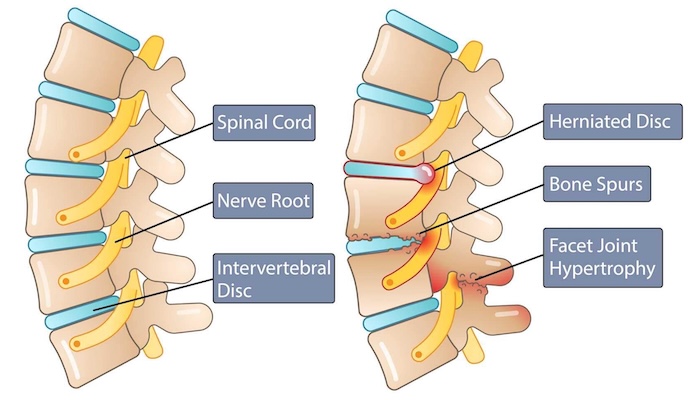
Spinal stenosis is a condition that affects many individuals, particularly as they age. It involves the narrowing of the spinal canal, which can put pressure on the spinal cord and the nerves that travel through the spine. At Precision Pain Care and Rehabilitation, we focus on addressing conditions like spinal stenosis through a combination of interventional pain management techniques that aim to reduce pain and improve function.
What is Spinal Stenosis?
The spine is composed of a series of bones called vertebrae that protect the spinal cord. Between these vertebrae are discs, which act as cushions, and the spinal canal, which houses the spinal cord and nerve roots. When this canal narrows, due to degenerative changes, injury, or other factors, it can lead to spinal stenosis. The condition commonly affects the lower back (lumbar spine) or the neck (cervical spine) and can result in pain, numbness, or weakness in the arms or legs.
Common Causes of Spinal Stenosis
- Age-related degeneration: As we age, the ligaments in the spine may thicken, and the discs can bulge or herniate. Arthritis may also cause bone spurs, leading to the narrowing of the spinal canal.
- Herniated discs: Discs that rupture or bulge can press on the nerves, contributing to spinal stenosis.
- Injuries: Trauma to the spine, such as fractures or dislocations, can result in stenosis.
- Genetic conditions: Some individuals are born with a smaller spinal canal, which predisposes them to developing symptoms earlier.
Symptoms of Spinal Stenosis
The symptoms of spinal stenosis can vary depending on the location and severity of the narrowing:
- Pain: Typically, in the lower back or neck, which may radiate to the legs or arms.
- Numbness or tingling: Particularly in the extremities.
- Weakness: In severe cases, individuals may experience muscle weakness or difficulty with balance and walking.
- Claudication: Pain or cramping in the legs when walking, which improves when sitting or bending forward.
The Role of Interventional Pain Management
At Precision Pain Care and Rehabilitation, we take a multidisciplinary approach to managing spinal stenosis. Interventional pain management focuses on identifying the source of pain and using minimally invasive treatments to reduce discomfort and improve function. Some of the techniques we use include:
- Epidural Steroid Injections (ESIs): These injections help reduce inflammation and relieve pain caused by pressure on the spinal nerves. They are often used for lumbar or cervical spinal stenosis.
- Facet Joint Injections: The facet joints connect the vertebrae and allow movement. Inflammation in these joints can cause pain, which may be alleviated with targeted injections.
- Radiofrequency Ablation (RFA): This procedure uses heat to disrupt nerve signals in areas that contribute to chronic pain. It can provide longer-lasting relief than injections alone.
- Spinal Cord Stimulation (SCS): For patients with more advanced cases of spinal stenosis, spinal cord stimulation may be considered. SCS involves implanting a device that delivers electrical pulses to the spinal cord, helping to modulate pain signals before they reach the brain.
Benefits of Interventional Treatments for Spinal Stenosis
Interventional pain management techniques offer several advantages, especially for individuals with spinal stenosis who want to avoid surgery:
- Minimally invasive: Most procedures involve small needles or devices and can be performed on an outpatient basis.
- Quick recovery: Patients often experience relief within days to weeks, with minimal downtime.
- Targeted relief: By addressing the specific source of pain, these treatments can provide more effective results than general pain management strategies.
- Surgery avoidance: Many individuals can manage their symptoms without needing surgery, thanks to the effectiveness of these interventions.
Supporting Data and Outcomes
Interventional pain management for spinal stenosis has been shown to improve quality of life significantly for many patients. Studies have demonstrated that epidural steroid injections can provide relief in up to 50% of patients, with results lasting several months. Radiofrequency ablation and spinal cord stimulation also offer longer-lasting benefits for chronic pain sufferers, helping patients regain mobility and function without invasive surgery.
Living with Spinal Stenosis
While spinal stenosis can limit your mobility and cause discomfort, the good news is that there are numerous options available to help you manage your symptoms. At Precision Pain Care and Rehabilitation, we work closely with each patient to develop a personalized treatment plan tailored to their needs. Our goal is to help you live a more active, pain-free life through the use of advanced interventional pain management techniques.
If you or a loved one is dealing with spinal stenosis, don't hesitate to reach out for an evaluation. Together, we can explore the most appropriate treatments to help alleviate your pain and improve your quality of life.
Precision Pain Care and Rehabilitation has two convenient locations in Richmond Hill – Queens, and New Hyde Park – Long Island. Call the Queens office at (718) 215-1888 or (516) 419-4480 for the Long Island office to arrange an appointment with our Interventional Pain Management Specialists, Dr. Jeffrey Chacko or Dr. Sonny Ahluwalia.















